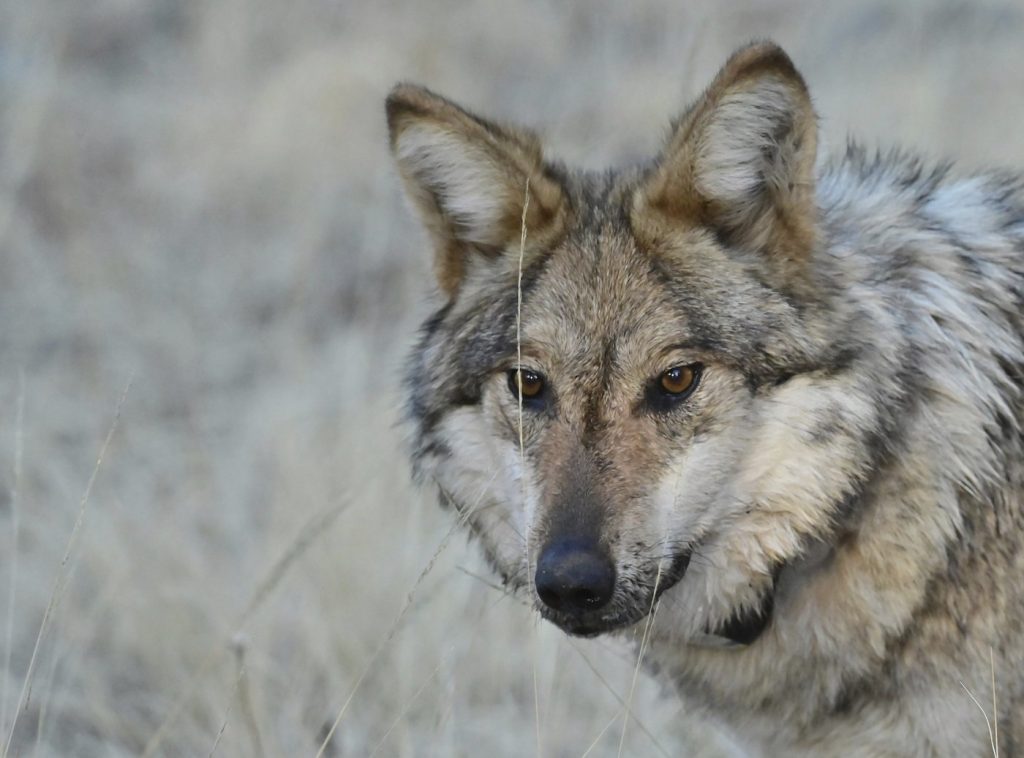ALBUQUERQUE, N.M. — In a rural New Mexico county, Catron County commissioners are contemplating declaring a state of emergency due to increasing incidents involving endangered Mexican gray wolves. Reports indicate that the wolves are brazenly snatching pets from front yards and attacking livestock, causing significant concern among residents who fear for their safety and their property.
The commissioners plan to meet on Thursday to consider a resolution that would allocate funds for additional personnel to investigate damage claims and to assist in hazing the wolves. An official statement from Catron County commissioners emphasized the current danger, stating, “This is an immediate health and safety hazard to individuals and property. Please be aware of your surroundings when outdoors at all times. Maintain constant supervision of children and pets.”
This escalating issue, however, is not confined to New Mexico. Officials in parts of Oregon and Northern California report similar incidents of increased wolf activity, with several livestock deaths prompting the declaration of emergencies in two California counties. A sheriff in another area has sought assistance from state wildlife officials regarding the situation. Ranchers express growing alarm, emphasizing that the threat posed by the reintroduced Mexican gray wolves adversely impacts their livelihoods during these challenging times marked by prolonged drought and rising operational costs.
Mexican gray wolves represent the smallest subspecies of gray wolves and have been the subject of contentious reintroduction efforts since the late 1990s, when the first captive individuals were released into the wild. Ranchers have consistently argued against these programs, stating that the wolves threaten their way of life. Environmental advocates, on the other hand, assert that the wolves play a crucial role in the Southwest's ecosystem and criticize the U.S. Fish and Wildlife Service for insufficiently increasing the number of released wolves, which would enhance genetic diversity within the wild population. They further contend that there is no historical record of a Mexican wolf attacking or injuring a human being.
Recent surveys indicate there are at least 286 Mexican gray wolves in Arizona and New Mexico, marking the ninth consecutive year of population growth. Despite reported livestock losses—99 confirmed killings in 2024—this rate of loss has been trending downward. Last year, wildlife managers conducted 290 successful hazing efforts aimed at deterring wolves from approaching rural residences and livestock.
The proposed resolution from Catron County highlights that the residents’ culture and customs have been adversely affected by the reintroduction program. The county is seeking emergency financial assistance from the state and calls upon the New Mexico National Guard to aid local authorities as required.
In Oregon, ranchers in Lake County—home to significant cattle operations—have been compelled to employ additional workers to monitor their herds around the clock, with some investing in night vision goggles. The county recently declared a public safety and livestock emergency, leading the governor to assist in removing a problematic collared wolf that was responsible for multiple livestock kills. After unsuccessful non-lethal attempts to deter the wolf, wildlife managers eventually killed it.
On the other hand, Sierra County in California declared a state of emergency on Tuesday, following Modoc County’s earlier action in mid-March. Nearby Lassen County has also reported increased wolf activity.
In Colorado, a group of citizens is gathering signatures for a petition regarding the potential reintroductions of wolves, aiming to present the issue to voters in a 2026 ballot initiative. Federal wildlife officials in Colorado recently killed a collared wolf that had entered the state from Wyoming and killed several sheep.
Meanwhile, in Montana, lawmakers are discussing legislation to extend the hunting season for wolves, while state wildlife managers in Idaho are permitted to carry out controlled trapping and snaring of wolves to manage their populations.
The debates surrounding gray wolves in the Northern Rockies and other regions continue to incite legal battles, with both supporters and opponents of the reintroduction strategy engaging in protracted legal disputes involving the federal government. These disputes concern the management rules surrounding the wolves in Arizona and New Mexico, with the fate of recovery area boundaries currently pending before a federal appeals court.










